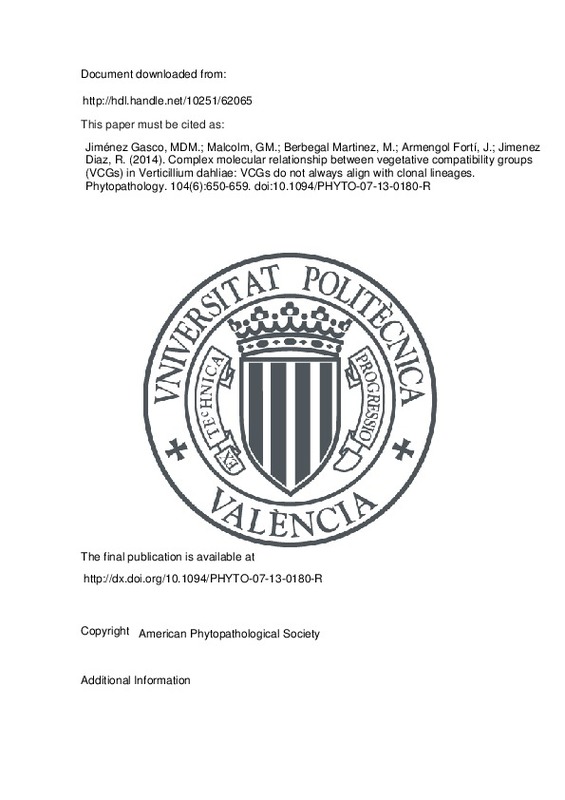JavaScript is disabled for your browser. Some features of this site may not work without it.
Buscar en RiuNet
Listar
Mi cuenta
Estadísticas
Ayuda RiuNet
Admin. UPV
Complex molecular relationship between vegetative compatibility groups (VCGs) in Verticillium dahliae: VCGs do not always align with clonal lineages
Mostrar el registro completo del ítem
Jiménez Gasco, MDM.; Malcolm, GM.; Berbegal Martinez, M.; Armengol Fortí, J.; Jimenez Diaz, R. (2014). Complex molecular relationship between vegetative compatibility groups (VCGs) in Verticillium dahliae: VCGs do not always align with clonal lineages. Phytopathology. 104(6):650-659. doi:10.1094/PHYTO-07-13-0180-R
Por favor, use este identificador para citar o enlazar este ítem: http://hdl.handle.net/10251/62065
Ficheros en el ítem
Metadatos del ítem
| Título: | Complex molecular relationship between vegetative compatibility groups (VCGs) in Verticillium dahliae: VCGs do not always align with clonal lineages | |
| Autor: | Jiménez Gasco, María del Mar Malcolm, Glenna M. JIMENEZ DIAZ, RAFAEL | |
| Entidad UPV: |
|
|
| Fecha difusión: |
|
|
| Resumen: |
Verticillium wilts caused by the soilborne fungus Verticillium dahliae are among the most challenging diseases to control. Populations of this pathogen have been traditionally studied by means of vegetative compatibility ...[+]
|
|
| Palabras clave: |
|
|
| Derechos de uso: | Reserva de todos los derechos | |
| Fuente: |
|
|
| DOI: |
|
|
| Editorial: |
|
|
| Versión del editor: | http://dx.doi.org/10.1094/PHYTO-07-13-0180-R | |
| Agradecimientos: |
This research was partially funded by the Sarah Chinn Kalser Faculty Research Assistance Endowment, College of Agricultural Sciences, The Pennsylvania State University. We thank all suppliers of V. dahliae isolates; J. ...[+]
|
|
| Tipo: |
|







![[Cerrado]](/themes/UPV/images/candado.png)


